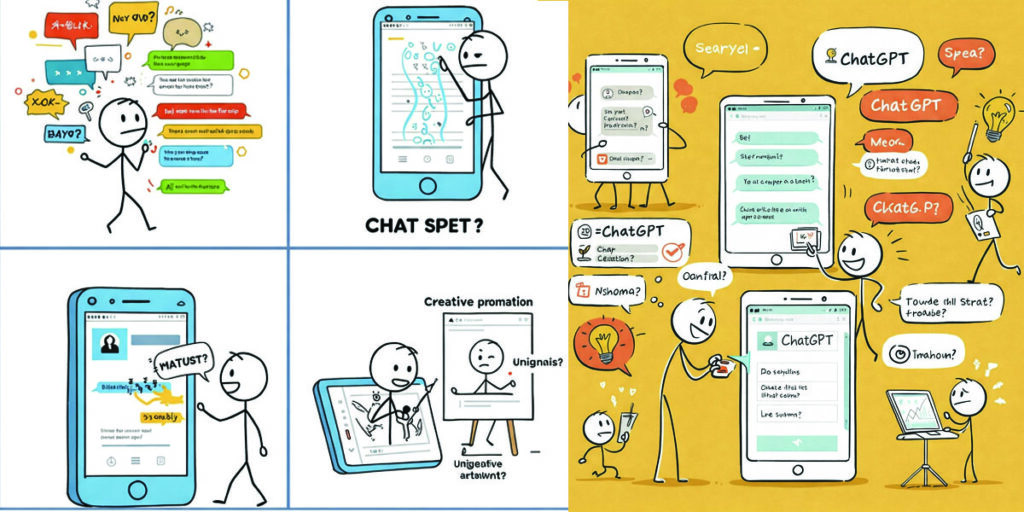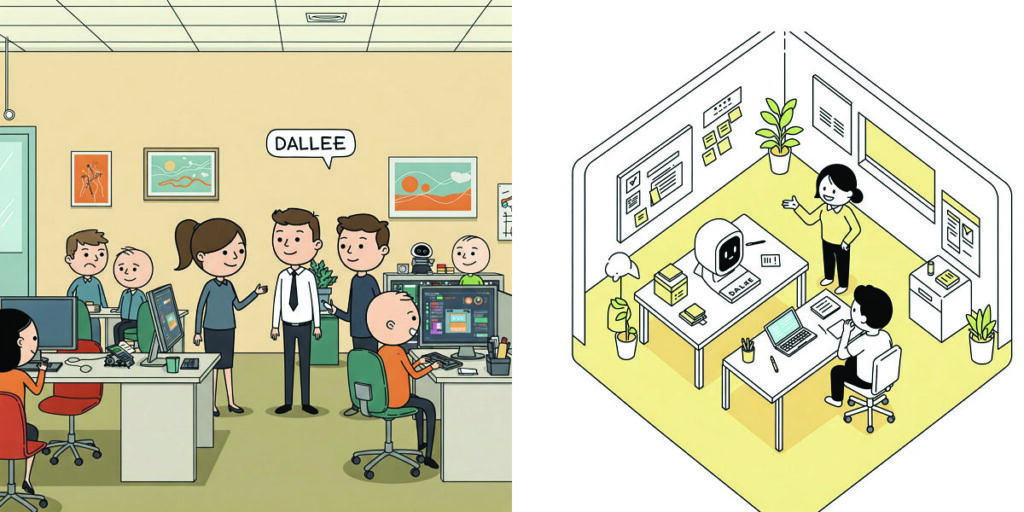AI tool for 3D capture and rendering using NeRF (Neural Radiance Fields) technology.
The relentless march of technological innovation continues to reshape industries and redefine possibilities. In recent years, the convergence of artificial intelligence and computer vision has given rise to groundbreaking tools that are transforming how we interact with and create digital content. Among these advancements, Luma AI stands out as a pioneering force, leveraging the power of Neural Radiance Fields (NeRF) to democratize high-fidelity 3D capture and rendering. This article delves into the historical context that paved the way for Luma AI, examines the economic market it operates within, explores the intricate networking aspects that underpin its functionality, and analyzes its potential impact on various sectors.
A Historical Tapestry: The Genesis of 3D Capture and Rendering
The quest to capture and represent the three-dimensional world in a digital format is a long and fascinating one, marked by incremental advancements and paradigm shifts. Early attempts at 3D representation involved painstaking manual modeling, requiring skilled artists and significant time investment. Techniques like photogrammetry emerged later, offering a more automated approach by reconstructing 3D geometry from multiple overlapping photographs. While a significant improvement, traditional photogrammetry often struggled with reflective surfaces, transparent objects, and intricate details, demanding specialized equipment and expertise for optimal results.
The late 20th and early 21st centuries witnessed the rise of laser scanning technology, providing highly accurate and dense point clouds of real-world environments. However, the cost and complexity of laser scanners limited their widespread adoption. Furthermore, converting these point clouds into visually appealing and easily manipulable 3D models often remained a computationally intensive and artist-driven process.
The advent of deep learning and neural networks in the past decade has ushered in a new era for computer vision. These powerful algorithms, capable of learning complex patterns from vast amounts of data, have revolutionized tasks like image recognition, object detection, and semantic segmentation. It was within this fertile ground of AI innovation that Neural Radiance Fields (NeRF) emerged as a disruptive technology, laying the foundation for tools like Luma AI.
The Dawn of Neural Radiance Fields (NeRF):
Introduced in a seminal research paper in 2020, NeRF represented a radical departure from traditional 3D reconstruction techniques. Instead of explicitly modeling geometry and textures, NeRF learns a continuous volumetric scene function using a multi-layer perceptron (MLP) – a type of neural network. This MLP takes 3D coordinates (x, y, z) and viewing direction (θ, φ) as input and outputs the color and density at that specific point in space.
By training this neural network on a set of 2D images of a scene captured from different viewpoints, NeRF learns to synthesize novel views of the scene from arbitrary camera positions and angles. This implicit representation of the 3D scene offers several advantages:
- High Fidelity: NeRF can capture intricate details and complex lighting effects, often surpassing the quality achievable with traditional photogrammetry.
- View Synthesis: The ability to generate new views allows for smooth and realistic rendering from any perspective, enabling immersive experiences.
- Compact Representation: The trained neural network represents the entire scene in a relatively small set of parameters compared to large 3D meshes or point clouds.
However, early NeRF implementations were computationally intensive, requiring significant training time and powerful hardware. Furthermore, capturing the necessary multi-view images often involved rigid setups and static scenes.
Luma AI: Democratizing NeRF with Mobile Accessibility:
Luma AI emerged as a key innovator in making NeRF technology more accessible and practical. Recognizing the transformative potential of NeRF, Luma AI focused on developing a user-friendly platform that could leverage the capabilities of everyday mobile devices for 3D capture. Their core innovation lies in optimizing the NeRF training process and developing intuitive capture workflows that can be performed using smartphone cameras.
By employing advanced techniques in data acquisition, neural network architecture, and rendering optimization, Luma AI has significantly reduced the computational burden and capture complexity associated with NeRF. This breakthrough has opened up the possibilities of high-quality 3D capture to a much wider audience, including creators, designers, businesses, and individual users.
The Economic Market for AI-Powered 3D Capture and Rendering
Luma AI operates within a rapidly expanding economic market driven by the increasing demand for immersive and interactive 3D content across various sectors. This market encompasses hardware, software, and services related to 3D capture, processing, rendering, and visualization. The key drivers fueling this growth include:
- Metaverse and Spatial Computing: The burgeoning metaverse and the broader concept of spatial computing are creating a significant demand for realistic and interactive 3D environments and avatars. Luma AI’s ability to generate high-fidelity 3D assets from real-world objects and scenes positions it as a crucial enabler for these emerging digital realms.
- E-commerce and Retail: 3D product visualization is revolutionizing online shopping experiences. By allowing customers to interact with realistic 3D models of products, businesses can enhance engagement, reduce returns, and increase conversion rates. Luma AI offers a cost-effective and accessible solution for creating these immersive product showcases.
- Gaming and Entertainment: High-quality 3D assets are fundamental to the gaming and entertainment industries. Luma AI can streamline the process of creating realistic environments, characters, and props, potentially reducing development time and costs.
- Architecture and Real Estate: 3D walkthroughs and virtual tours are becoming increasingly popular in the architecture and real estate sectors. Luma AI can facilitate the creation of immersive experiences that allow potential buyers or renters to explore properties remotely.
- Manufacturing and Industrial Design: 3D scanning and modeling are essential for quality control, reverse engineering, and product design in manufacturing. Luma AI offers a portable and user-friendly alternative to traditional scanning methods for certain applications.
- Cultural Heritage and Preservation: Capturing and preserving historical artifacts and sites in 3D allows for documentation, research, and virtual tourism. Luma AI provides a non-destructive and efficient method for creating detailed 3D records.
- Education and Training: Immersive 3D experiences can enhance learning and training in various fields, from medical simulations to engineering design. Luma AI can contribute to the creation of realistic and interactive educational content.
Market Dynamics and Competition:
The market for 3D capture and rendering is characterized by a diverse range of players, from established hardware manufacturers and software developers to emerging startups leveraging AI. Traditional photogrammetry solutions, laser scanners, and manual modeling tools still hold significant market share. However, AI-powered solutions like Luma AI are gaining traction due to their ease of use, affordability, and ability to capture complex details.
Competition in the AI-powered 3D capture space is intensifying, with other companies exploring NeRF and related technologies. The key differentiators in this market include:
- Ease of Use and Accessibility: Platforms that simplify the capture and processing workflow and can be used with readily available hardware (like smartphones) have a significant advantage.
- Quality and Fidelity: The ability to generate high-resolution and accurate 3D models is crucial for many applications.
- Speed and Efficiency: Faster capture and processing times are essential for real-world workflows.
- Integration Capabilities: Seamless integration with existing design tools, game engines, and e-commerce platforms is important for user adoption.
- Pricing and Business Models: Offering competitive pricing and flexible business models is key to attracting a wide range of users.
Luma AI’s focus on mobile accessibility and user-friendliness positions it uniquely within this competitive landscape, potentially democratizing high-quality 3D capture for a broader audience.
The Networking Fabric: How Luma AI Functions
The functionality of Luma AI relies on a sophisticated interplay of hardware, software, and network connectivity. The core process involves capturing multiple images of an object or scene using a smartphone camera and then uploading these images to Luma AI’s cloud platform for processing and NeRF reconstruction.
Capture Process:
Luma AI’s mobile application guides users through the image capture process, providing real-time feedback to ensure sufficient coverage and overlap between images. This guided capture helps optimize the quality of the input data for the NeRF algorithm. The application leverages the smartphone’s camera and sensors to capture images from various angles and perspectives around the subject.
Cloud Processing:
Once the images are uploaded to Luma AI’s cloud infrastructure, the heavy lifting of NeRF training and 3D reconstruction takes place. This involves:
- Image Alignment and Calibration: The uploaded images are processed to determine the precise camera pose (position and orientation) for each image. This is crucial for accurately reconstructing the 3D scene.
- NeRF Training: The core of the process involves training a neural network (the MLP) to learn the volumetric representation of the scene based on the input images and their corresponding camera poses. This training process can be computationally intensive and benefits from the parallel processing capabilities of cloud-based GPUs (Graphics Processing Units).
- View Synthesis and Rendering: After the NeRF model is trained, it can be queried to generate novel views of the scene from any desired viewpoint. Luma AI’s platform likely employs optimized rendering techniques to efficiently generate these views for various applications.
- Model Output and Export: The resulting 3D representation can be presented within Luma AI’s platform for viewing and interaction. Users can also typically export the 3D model in various formats (e.g., USDz, glTF) for use in other applications and platforms.
Networking Requirements:
Reliable network connectivity is essential for the seamless operation of Luma AI. Users need a stable internet connection to:
- Upload Capture Data: The captured images, which can be substantial in size, need to be uploaded to Luma AI’s cloud servers.
- Access Cloud Processing: The computationally intensive NeRF training and rendering occur in the cloud, requiring a network connection to initiate and monitor the process.
- Download and Share Results: Once the 3D model is generated, users need to download or share the results, again requiring network connectivity.
- Utilize Platform Features: Accessing Luma AI’s web interface, viewing models, and utilizing collaboration features all rely on network connectivity.
Optimization and Efficiency:
Luma AI likely employs various techniques to optimize the network usage and processing efficiency:
- Data Compression: Compressing the uploaded images can reduce upload times and bandwidth consumption.
- Efficient Cloud Infrastructure: Leveraging scalable cloud platforms ensures sufficient processing power and storage capacity.
- Optimized NeRF Algorithms: Continuously refining the NeRF training process to reduce computation time and resource usage is crucial.
- Progressive Rendering: Displaying lower-resolution previews of the 3D model during the rendering process can provide users with faster feedback.
The Transformative Impact of Luma AI
Luma AI’s innovative approach to 3D capture and rendering has the potential to significantly impact various industries and workflows:
- Content Creation: Luma AI empowers creators to easily generate high-quality 3D assets from real-world objects and environments, democratizing 3D content creation for individuals and small teams. This can revolutionize workflows in areas like game development, animation, and visual effects.
- E-commerce: By enabling businesses to create realistic 3D product models using just a smartphone, Luma AI can significantly lower the cost and complexity of implementing immersive online shopping experiences. This can lead to increased customer engagement, reduced returns, and higher conversion rates. Imagine being able to virtually inspect every angle and detail of a product before making a purchase.
- Metaverse Development: The creation of realistic and detailed 3D environments is crucial for building compelling metaverse experiences. Luma AI can provide a powerful tool for rapidly capturing and integrating real-world elements into virtual worlds, bridging the gap between the physical and digital realms. Imagine scanning your living room and seamlessly integrating it into your virtual home in the metaverse.
- Education and Training: Luma AI can facilitate the creation of immersive and interactive educational materials. Imagine students being able to virtually explore historical artifacts or complex scientific models captured in 3D using a smartphone. This can enhance engagement and understanding in various learning environments.
- Cultural Heritage Preservation: Luma AI offers a cost-effective and non-destructive method for digitally preserving historical artifacts and sites in high detail. This allows for wider access to cultural heritage for research, education, and virtual tourism, safeguarding these treasures for future generations. Imagine virtually exploring ancient ruins with a level of detail previously only accessible through physical visits.
- Real Estate and Architecture: Creating immersive virtual tours of properties using Luma AI can provide potential buyers or renters with a realistic sense of space and layout, enhancing remote viewing experiences and potentially reducing the need for physical visits. Imagine taking a detailed virtual walkthrough of a house from the comfort of your own home.
- Industrial Design and Prototyping: Luma AI can be used for rapid prototyping and visualization in industrial design. Designers can quickly capture 3D models of physical prototypes for digital review and iteration, streamlining the design process. Imagine quickly digitizing a clay model to share with your design team for feedback.
Challenges and Future Directions:
Despite its significant advancements, Luma AI and the broader field of NeRF-based 3D capture still face certain challenges:
- Dynamic Scenes: Capturing and accurately reconstructing dynamic scenes with moving objects remains a significant challenge for NeRF technology.
- Large-Scale Environments: Reconstructing large outdoor environments with consistent detail and efficiency requires further research and development.
- Material Properties: Accurately capturing and representing complex material properties like translucency and reflectivity can still be challenging.
- Computational Resources: While Luma AI has made significant progress in reducing computational demands, further optimization is needed for real-time or near real-time applications on mobile devices.
Future directions for Luma AI and the field are likely to focus on addressing these challenges and further enhancing the capabilities of AI-powered 3D capture:
- Improved Handling of Dynamic Scenes: Research into temporal NeRFs and other techniques aims to enable the capture and rendering of moving objects and dynamic environments.
- Scalability for Large Scenes: Developing more efficient NeRF representations and training methods will be crucial for handling large-scale environments.
- Advanced Material Modeling: Incorporating more sophisticated techniques for capturing and rendering complex material properties will enhance the realism of the generated 3D models.
- Real-time Applications: Further optimization and hardware advancements may enable real-time NeRF rendering on mobile and embedded devices, opening up new possibilities for augmented reality and interactive applications.
- Integration with AI Tools: Combining NeRF with other AI capabilities, such as object recognition and semantic understanding, could lead to more intelligent and interactive 3D experiences.
Luma AI represents a significant leap forward in the evolution of 3D capture and rendering. By harnessing the power of Neural Radiance Fields and optimizing it for mobile accessibility, Luma AI is democratizing the creation of high-fidelity 3D content, opening up a world of possibilities for creators, businesses, and individuals alike. As the metaverse continues to take shape and the demand for immersive digital experiences grows, tools like Luma AI will play an increasingly crucial role in bridging the gap between the physical and digital worlds, ushering in a new era of spatial technology and transforming the way we interact with and create digital content. The historical journey from manual modeling to AI-powered implicit representations has culminated in a powerful and accessible tool that promises to reshape numerous industries and empower a new generation of 3D creators. The economic market is ripe for disruption, and Luma AI’s innovative approach positions it as a key player in this exciting and rapidly evolving landscape. The intricate networking that underpins its functionality ensures a seamless user experience, from capture to creation. As the technology continues to evolve, the transformative potential of Luma AI to impact our digital lives will only continue to grow.




















